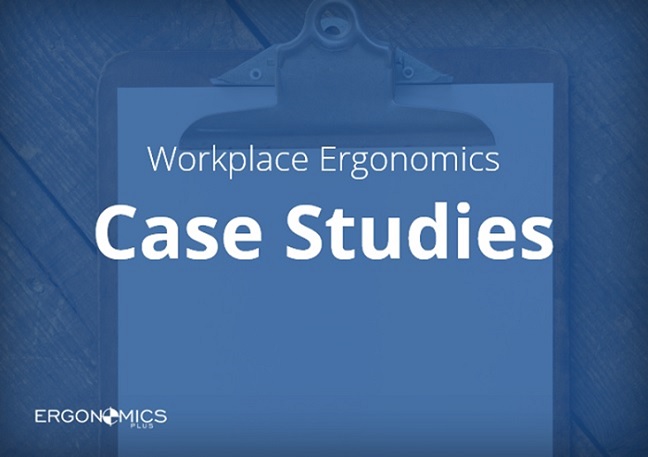In theory and practice, ergonomics is a valuable business tool. Good ergonomics reduces injury risk, improves work performance and efficiently builds a better end product.
Our monthly feature, Workplace Ergonomics Case Studies, moves away from abstract theory and dives into the real world practice of ergonomics. It’s about real people doing real work in ergonomics, with tangible takeaways and principles you can apply in your workplace right now.
This installment of Workplace Ergonomics Case Studies is submitted by Ergonomics Plus injury prevention specialist Alison Ondrus.
Alison Ondrus, MPA, ATC/L, CSCS, CEAS

Job Description
Team members are removing pallets from underneath the rack with a simple metal hook device with a handhold on the end.

Ergonomic Risk Factors
Excessive force was needed to move heavy material on the rolling pallet from under the rack. The rolling pallet was not easily pulled and manipulated, causing awkward postures to compensate for it.
- Pulling excessive force.
- Pulling in awkward position.
Ergonomic Controls Implemented
The wheels on the new device and the angle of pull allow the material to be easily manipulated from a proper standing position.


Cost of Ergonomic Improvement
The new device was fashioned by the facilities / maintenance team and the cost of this ergonomic improvement was a low capital expenditure.
Effectiveness of Ergonomic Improvement
The new device eliminates the need to pull from awkward positions and decreases the pulling force by half.
Ergonomic Principles and Takeaways
Reduce excessive force: Muscle effort increases in response to high force requirements, increasing associated fatigue which can lead to MSD. Using mechanical assists, counter balance systems, adjustable height lift tables and workstations, powered equipment and ergonomic tools will reduce work effort and muscle exertions.
Reduce awkward postures: Awkward postures place excessive force on joints and overload the muscles and tendons around the effected joint. Eliminate or reduce awkward postures with ergonomic modifications that seek to maintain joint range of motion to accomplish work tasks within the mid-range of motion positions for vulnerable joints.
For more on ergonomic risk factors and fundamentals, read:
- How to Recognize Ergonomic Risk Factors
- 8 Fundamental Ergonomic Fundamentals for Better Work Performance
Your Free Ergonomics and Injury Prevention Education
When you sign up for free Ergonomics Plus updates, you’ll be the first to get new case studies, articles, tips and resources. Plus, you’ll get instant access to our bonus Ebook, MSD Prevention 101, just for signing up.

